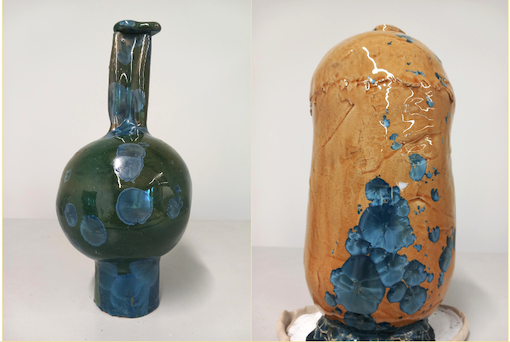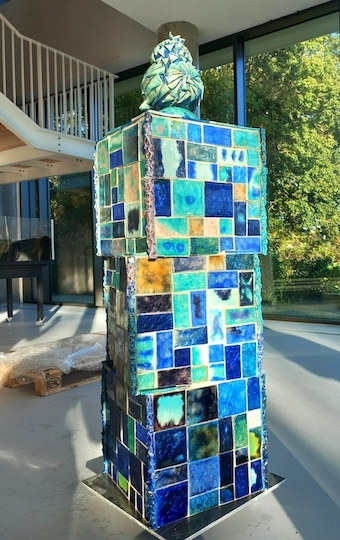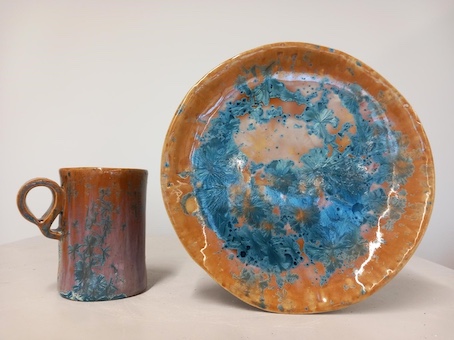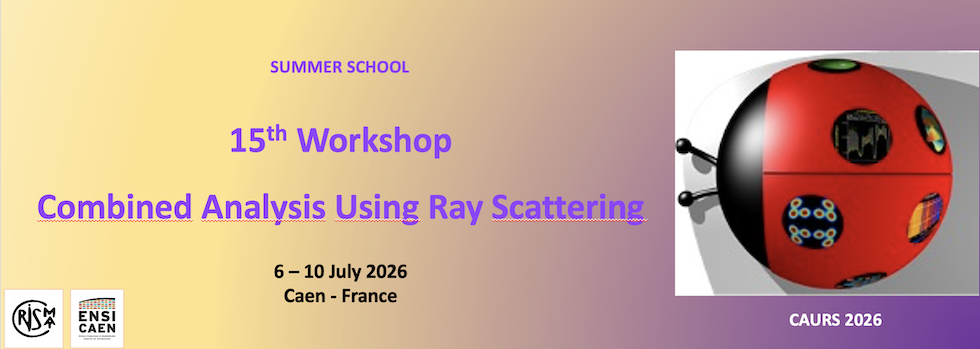
Throughout the week, we will be pleased to offer you an exhibition by our local artist Sophie Moraine.
Sophie Moraine is a visual artist, based in Caen (France). She has been in artistic and scientific residency at the CRISMAT laboratory (ENSICAEN, UNICAEN, CNRS) since January 8, 2024.
Her multidisciplinary residency is called: L’Unitas Multiplex, a title linked to the concepts of ancient Greece, brought back into the spotlight by the wise Edgar Morin, meaning the whole is different from the sum of its parts. The residency is seen as a complex system in which the whole includes a multiplicity of results and points of view to create something in common. We designed the residency in three stages: The Rope, The Ascension and The Perspectives.
The Rope, the first objective, was to produce crystals, called “gigacrystals” (more than 5 cm in diameter) on sandstone from Molay-Littry (Calvados) and to understand the interaction of atoms in the formation of crystals, according to the parameters predefined before firing. This objective was achieved.

This residency also had a social intention, prepared in The Rope: that of bringing together what was scattered, by sharing points of view on experiments and the progressive integration of an artist in an unusual environment in order to prove that differences can become unifying and complementary. In parallel with the research undertaken, a collaborative and lasting work in stoneware and crystallized enamel was created by the artist and named by all the souls of the laboratory: "CRISMOWL".

During the last 6 months of 2024, the second objective named The Ascension consisted of looking for new materials, both for the substrate and for the enamel composition, with a particular focus on industrial waste in order to respond to current environmental issues, with a concern for ecology and based on the eutectic phenomenon. Our intention was to move towards recycled materials: washing sludge from concrete mixers, concrete fiber, slate, shell powders, blast furnace fly ash, archaeological residues and recycled silica. The results have, among other things, highlighted the possibility of lowering the "traditional" temperature for melting enamels on stoneware, below 1200 degrees.

For 2025, we also want to explore a potential functionalization of enamels, this is the stage called Perspectives.
2025 will also be the year of a major art-science exhibition of the CRISMAT laboratory, outside the walls, in November 2025. All the laboratory's stakeholders will have the opportunity to participate in the development of this exhibition via workshops led by the artist.
To learn more about the artist:
www.sophiemoraine.com



